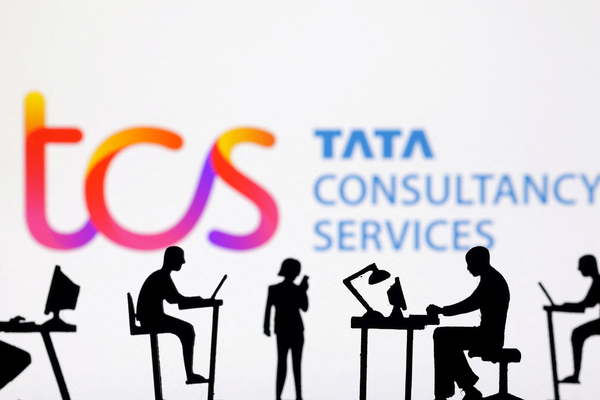Boosting workforce readiness by fighting change fatigue
How imbuing organisations with strategic skills at all levels can keep resistance to transformation projects at bay

We hear a lot about how soft skills such as empathy, conflict-resolution and the ability to communicate, negotiate and collaborate effectively are instrumental at work.
Approaches to ensuring employees are equipped to deal with the often rapidly changing contours of the working landscape, approaches to “workforce readiness” can vary widely. But in a digital age that’s plagued by tech skills shortages, it’s essential if companies are to navigate the maze of digital transformation.
However, there is another group of so-called strategic skills that can play a key role in overcoming employees’ resistance to change – which is often to blame for the failure of transformation projects.
Understanding workforce readiness
We still don’t seem to have a well-established definition for workforce readiness. The one formulated by IT skills training provider QuickStart defines it as “the competence and willingness of employees to change and adapt according to the needs of the workplace”. Workforce readiness is also generally understood to concern employees’ ability to respond to unique challenges and unfamiliar situations, and also seeing them as opportunities to expand their knowledge and skills.
There have been other attempts to quantify the theory. In an article published in 2019, HR data platform Employee Cycle offered a formula that claimed to help HR professionals calculate the readiness of their organisation’s workforce. Readiness in this case is defined as a metric gauging the outcomes of a company’s talent and change management efforts incorporating the percentage of vacant positions (talent shortage), as well as the ratio of employees possessing the competences essential to achieving strategic goals.
Employees trying to cope with constant change
Tech skills shortages may well be the ticking timebombs of the digital economy, but an increasing number of reports point out how resistance to change can be just as much of a threat to digital implementation and sustaining results, as well as the importance of managing it.
But regardless of whether they are of a flexible personality or set in their ways, humans are more or less predisposed to appreciate stability, predictability and an unchanging status quo. Previous negative experiences with corporate transformation projects can contribute to disillusionment or scepticism when it comes to transformation initiatives.
The digital age, with its accelerated technological advancements and volatility, stress-tests us with new circumstances day by day – both in our private and professional lives. It’s a situation each of us needs to adapt to, and which goes against the grain of our natural desire for continuity.
How embracing strategic skills can help us unlearn our visceral response to change
Strategic skills – the ability to be resolute while still open to thinking flexibly – are traditionally associated with top managers and executives. Leaders are expected to be forward-thinking and able to anticipate future trends, as well as the associated challenges and opportunities. Openness to innovative ideas and solutions are the hallmarks of a successful leader too.
Especially in the age of agile, leaders can only be successful if they continuously tweak their strategy, are able to quickly change tack and strive to enable their teams to pivot in line with changing market conditions or competitors’ moves.
But how much change can employees tolerate without becoming disengaged?
It’s all very well to require them to commit to a digital transformation project, understand its objectives and how their own role fits into the bigger picture, then tell them to knuckle down and do their bit. But how many changes and swerves can the workforce realistically handle before they dismiss the next as yet another waste of resources that will eventually come to nothing. How many times can management have the buy-in of their workforce before losing credibility?
These questions become even more relevant in the light of a recent McKinsey study which shows that 70 per cent of all digital transformation projects end in failure.
In another study, McKinsey, however, also points out that the more actions a company on a transformation journey implements to manage change, the more the project will be likely to succeed.
Altering the workforce’s attitude to change is also an action that can greatly contribute to success. If the presence of strategic skills isn’t limited to top management but they are acquired by leaders – and, ideally, their staff too – at all levels of the organisation, attitudes to dynamically changing strategies, false starts, pivots and reviews will change too.
Not just top but also middle and low-level management should therefore be in touch with the volatility of the market, for example, as well as existing and emerging risks in the context of their responsibilities and deliverables.
As soon as staff across an organisation are aware of market pressures, risks and worst case scenarios, they will be more open to readjustments and pivots than if they are just expected to do what they are told. They will also be less susceptible to regarding new norms as merely the latest whim of top management, and they may feel more willing to own them too.
Keeping an eye on shifts in economic and market trends and applying strategic thinking to reduce the risks and take the opportunities they present at every organisational level will break down resistance to change and prevent change fatigue. This is especially true when the unpredictability of external circumstances is combined with a sense of control, confidence and trust that prevails in an internal corporate environment, where adapting to volatility is a collective effort and everyone’s tactical and strategic insights about how to meet challenges head-on are heard.
Related Articles
Most Viewed
Winston House, 3rd Floor, Units 306-309, 2-4 Dollis Park, London, N3 1HF
23-29 Hendon Lane, London, N3 1RT
020 8349 4363
© 2025, Lyonsdown Limited. Business Reporter® is a registered trademark of Lyonsdown Ltd. VAT registration number: 830519543






